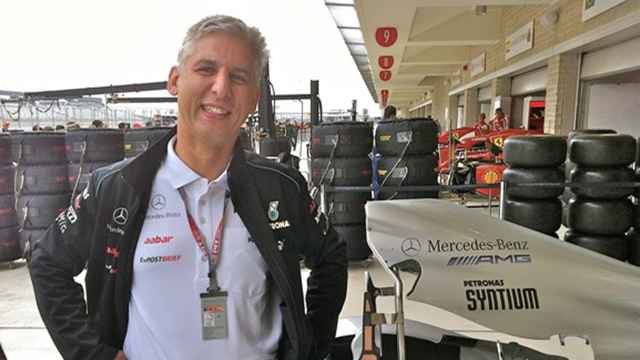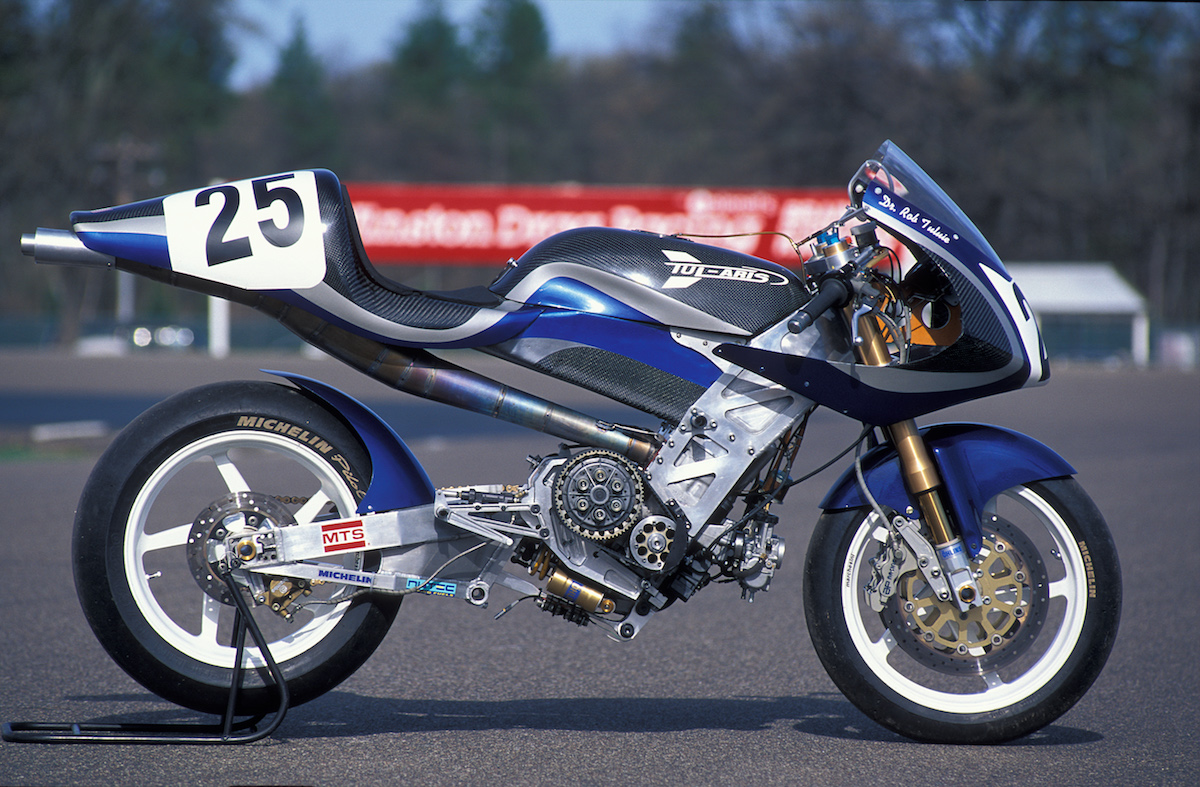Rob is quite the interesting guy. I got to know him quite well back when we were both racing Commandos. Besides being a very talented racer with many race wins behind him, he also managed to acquire a Ph. D. in astrophysics, build a couple of innovative race bikes (google the Tul-da and the Tularis), and work at a variety in interesting jobs in the motorcycle and auto racing industries, including chassis development at Polaris for the Victory motorcycle, developing the first 2-post hydraulic chassis simulator/shaker at MTS, then head of R&D for the Renault F1 team, later moving to chief scientist and head of R&D for the Mercedes F1 team, and then to director of vehicle technology at Bentley, as well as consulting for the Ducati Motogp team. I last saw Rob a couple of years ago on a visit back to the States (he's been living in England since moving there to work for the Renault team), and he's still going strong as chief scientist at Keselowski Advanced Manufacturing (KAM), consulting to a variety of companies, as well as building and driving a vintage racing car. For anyone interested, there is some more info on him in these links:
Actually, it is rocket science

magazine.cycleworld.com
Keselowski Advanced Manufacturing rounds out leadership team with the addition of Dr. Robin Tuluie.

www.kamsolutions.com

www.cycleworld.com
“We ARE rocket scientists” – so reads the slogan on the sweatshirt of Robin Tuluie. In fact, Tuluie was originally an astrophysicist before he moved to Mercedes-Benz in 2011 and became a key figure in its current domination of grand prix racing. You might say he is partly responsible for making...
amcn.com.au
These are a couple of pictures of Rob with his Commando race bike at a motorcycle meet somewhere in Texas. He had ridden the bike there and back, with no license plate or lights. He was a pretty wild guy.
And this is a bit more recent picture of him, when he was with the Renault F1 Team. A little older, a little grayer.
And a more "casual" picture of him in his vintage race car.
Didn't mean to hijack this thread, but Rob is one of the more interesting people I've known, and I couldn't resist passing on some of his exploits.
Last picture, I promise. This is me on Rob's Polaris powered bike, the Tularis, at Willow Springs coming down the hill from the Omega. I think that was in 2006. I haven't been on track with a bike since.
Ken










